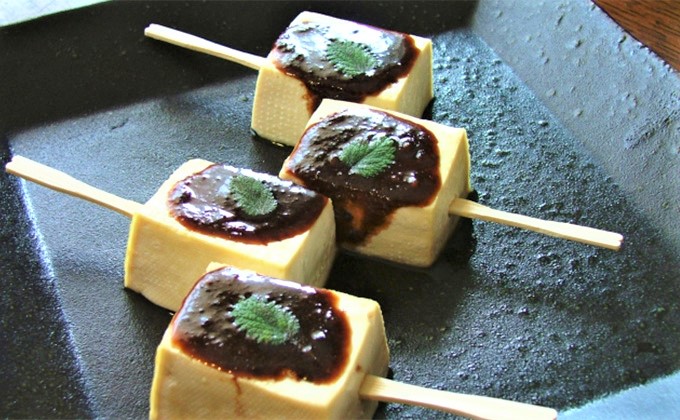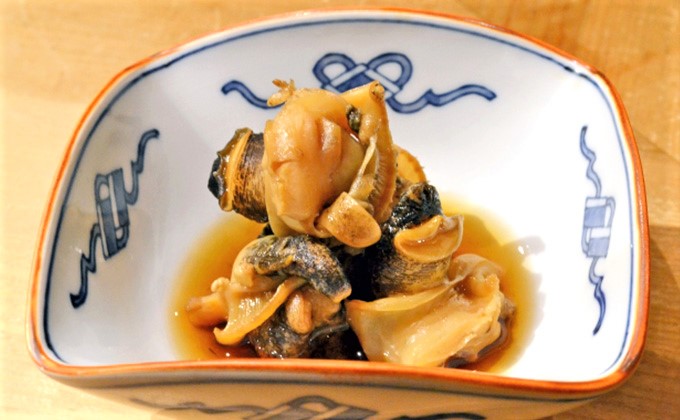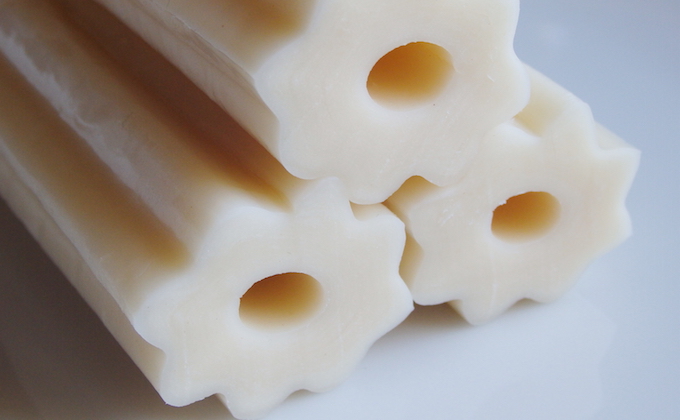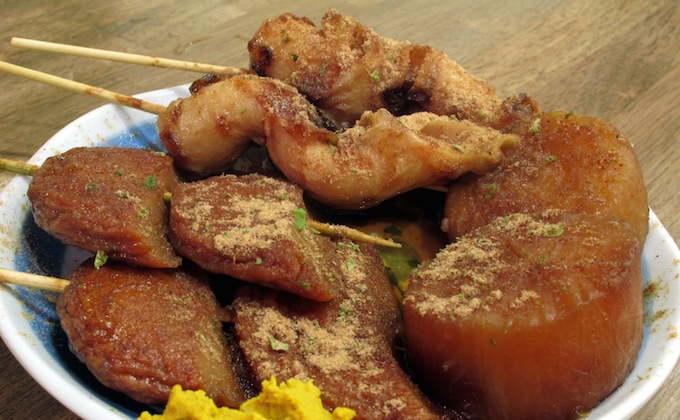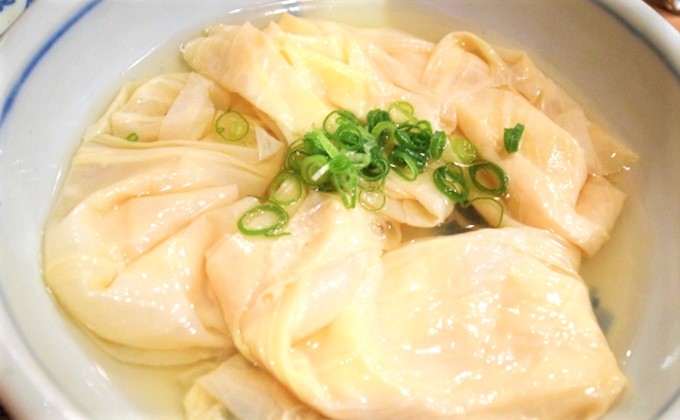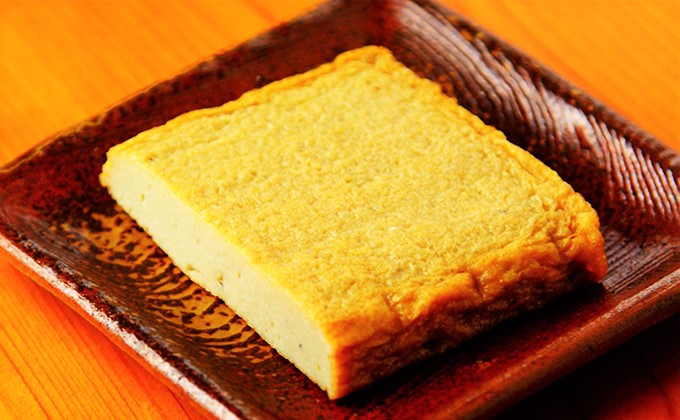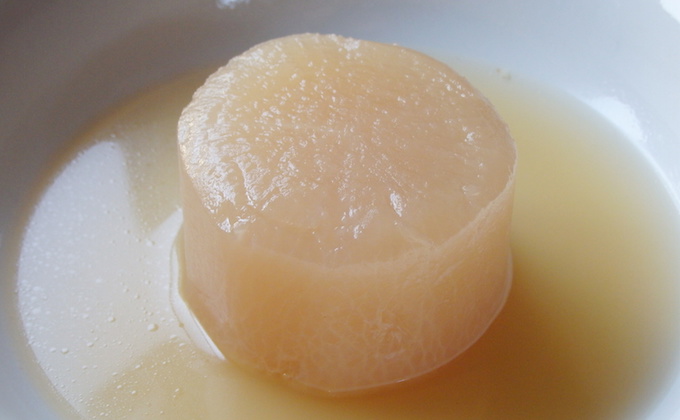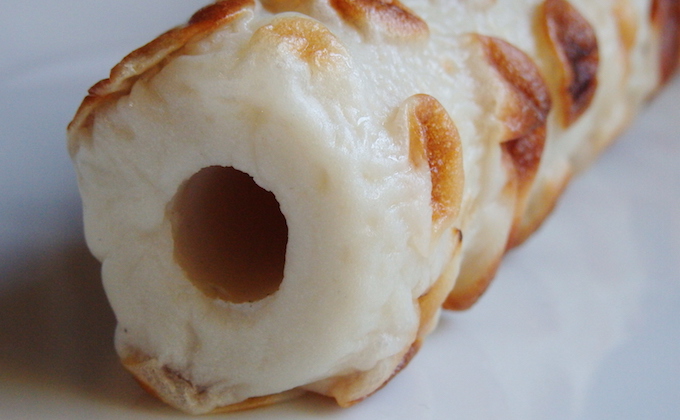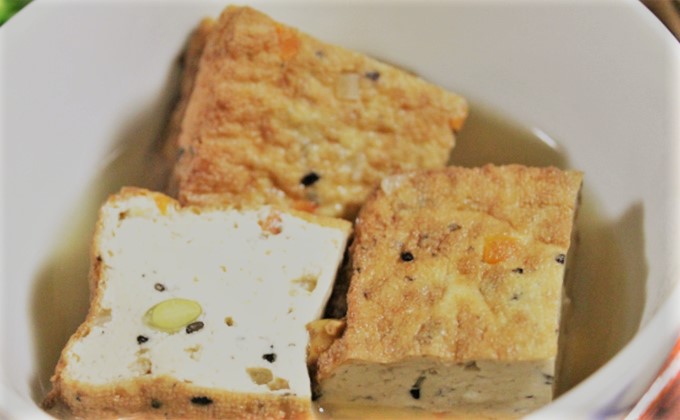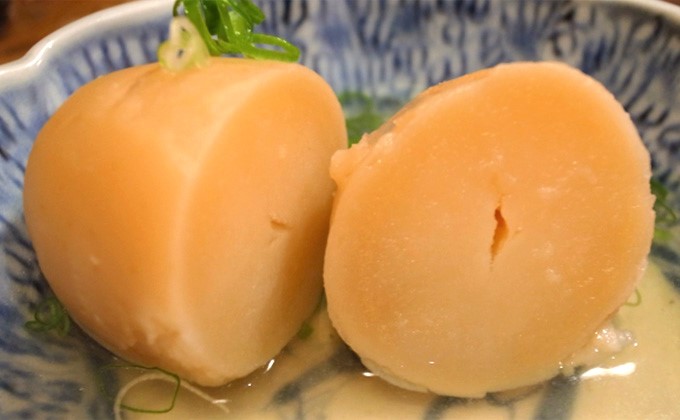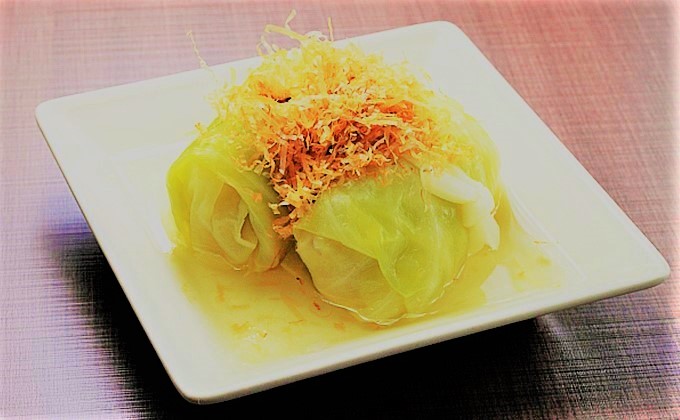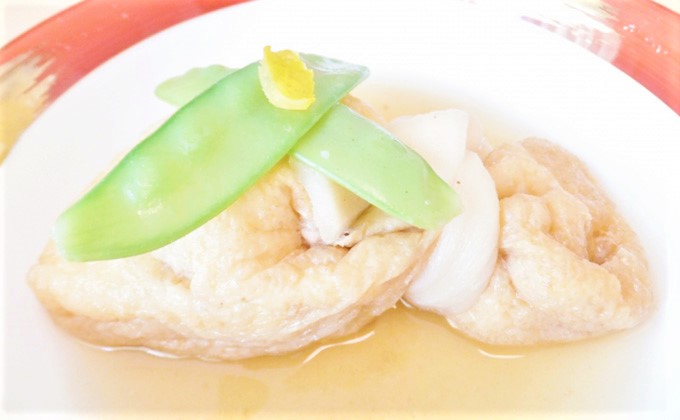TRG Info and Advice
Oden
The History of Oden
Oden has its roots in tofu dengaku, which are rectangular slices of tofu grilled on bamboo skewers. The name, dengaku, originally comes from dengaku-mai (ritual music and dancing), which is performed to the rhythm of flutes and taiko drums during rice planting season, to pray for a good harvest. The dish was so named because the white tofu on the skewer looks like a dengaku performer dancing on a single stilt. Over time, dengaku was shortened to oden (“den” prefaced by the honorific “o”).
Until the end of the Heian Period (the end of the 12th Century), tofu dengaku was seasoned with only salt, as there was no seasoning such as miso or hishio (a type of salty seasoning which is the ancestor of soy sauce). In the Kamakura Period, culinary arts and the use of seasonings were developed, and with the appearance of mortar, miso began to be used as a seasoning rather than eaten as a dip. This led to people cooking miso soup and creating simmered dishes in miso sauce. Eventually, the miso-glazed and grilled oden of today appeared.
In addition to miso, another essential oden ingredient, fish cakes, began being produced with the use of mortars. Catfish kamaboko (a rubbery and firm fish paste) first appeared in a cookbook written in the Muromachi Period (14th to 16th Centuries).
In the Edo Period, the city of Edo flourished as a political center, while Osaka developed as a commercial and industrial center. Edo was an up-and-coming city, and its development was supported by townspeople who gathered from all over Japan, so the food service industry, especially, thrived. During this era, in Kamigata (Osaka), konnyaku (devil’s tongue) was boiled in a kombu seaweed broth and served with a sweet miso paste. This was the first appearance of boiled dengaku, or non-grilled dengaku, and it is the origin of stew-style oden as it is today. The broth, however, was not yet seasoned at that time.
In the 18th Century, there appeared many teahouses along the roads, and stalls and izakaya pubs were also full of customers. As restaurants specializing in udon noodles and soba noodles emerged, the varieties of dengaku also increased: tofu, eggplant, sato-imo (taro), konnyaku (devil’s tongue), fish, and others. Dengaku on a skewer gained popularity among common people as a quick snack in the Edo Period. Peddlers walked around with an oden pot and a sake-heating pot on wooden boxes, hung at both ends of a pole that rested across their shoulders.
In Osaka, people kept up the traditional recipe of dengaku; simmering ingredients in kombu dashi broth and serving them with sweet miso paste. In Edo, on the other hand, people began boiling ingredients in a sweet-and-salty sauce made with bonito stock, soy sauce, sugar and mirin (sweetened sake). People were demanding quick and delicious food, so peddlers began to sell oden at stalls, and it really filled up customers’ stomachs. Osaka-style oden took time, to first simmer and then be topped with miso paste, so, in Edo, ready-to-eat oden simmered in soy flavoring was all the rage.
Simmered oden passed down from the Edo Period was transformed into a stew-style during the Meiji Period, and was then introduced to the Kansai District. Soy-flavored, simmered oden brought by cooks in Edo to Osaka is called Kanto-daki (literally: a Kanto-style simmered dish) to differentiate it from the Osaka-based, boiled oden with miso sauce (dengaku).
The dark color of soy sauce was not very popular in Kansai so, instead, a light-colored soy sauce was used; this became known as Kansai-style oden. When restaurants in the Kanto District were devastated by the Great Kanto Earthquake, cooks in Kansai started businesses in Kanto, and satsuma-age (deep-fried fish cakes), which were popular in Kansai, became another one of the ingredients in Kanto’s oden. Also, as tako-no-kantodaki (whole octopus simmered in salty-sweet soy sauce) was a local specialty of Osaka, it became an oden ingredient, too. Oden in Kansai came to include a large variety of ingredients, and, when it was “reimported” to Kanto, it spread widely. As both its broth and ingredients diversified, oden became more delicious, and eventually grew into a common people’s food served at stalls, izakaya pubs and penny candy stores. After World War II, the technology to ensure the freshness of ingredients like fish cakes developed, and it became easier to find oden items in shops and supermarkets. Thus, oden became a typical menu at home. In 1979, even convenience stores began selling oden.
What is oden?
Oden is a dish of various ingredients, such as tofu, daikon radish, konnyaku devil’s tongue, eggs and fish cakes, all simmered in one pot. Kombu or bonito dashi stock are used for the broth and it is further seasoned with soy sauce, miso, or salt. This dish is especially popular in winter.
Oden has a lot of regional differences, and each area has its own variety of oden, using local ingredients for broth, seasoning and food items.
Hokkaido and Tohoku
Oden in Hokkaido features mountain vegetables such as fuki (butterburs) and warabi (bracken ferns), and clams such as tsubugai (whelks). Stalls at cherry-blossom viewings and summer festivals sell oden, including hard-boiled eggs, satsuma age (deep-fried fish cakes) and konnyaku (devil’s tongue), on a skewer topped with miso and ginger sauce.
In Tohoku, local ingredients are used in oden. In Aomori City and the surrounding area, it is common to remove oden items from the pot onto a plate, and eat them with miso and ginger sauce.
Kanto
In general, oden is cooked in a dried-bonito flavored broth and seasoned with light-colored soy sauce. Chikuwabu (flour-based food in a tube shape), hanpen (white fluffy fish cake), suji (steamed fish cake made from shark) and tsumire (fish-paste balls) are popular in areas around Tokyo. Suji is fish cake made from fish meat, cartilage, and other parts, different from gyu suji which is made from beef tendon. Chikuwabu is a tubular food item made by kneading flour with water and salt. It has a handle-bar, or gear-shaped, appearance.
Chubu
Unique versions of oden have taken root in areas from Shizuoka to Aichi. One of the typical ingredients of oden in Shizuoka is kuro hanpen (black hanpen: fish cake made from ground sardines), and pork offal is also sometimes added. In Shizuoka, oden is eaten with ground fish powder and green laver powder. In Aichi, oden flavored with miso is popular.
Kansai
In Osaka, oden is often called Kanto-daki. Kanto-daki in Osaka is prepared with kombu dashi stock. Whale meat is an essential ingredient, and gyu suji (beef tendon) is also included. In Kyoto, Kyoto’s specialty vegetables and yuba (tofu skin) are sometimes added, too.
Chugoku and Shikoku
Oden in Chugoku and Shikoku features a dipping sauce. In Kagawa and Tokushima, miso with Japanese mustard is used, and in Ehime, people eat oden with “migarashi miso” sauce, which is a mixture of miso and Japanese mustard. In Kochi, rich and flavorful dashi broth made from kombu, bonito flakes and chicken bone is used, and the pieces of oden also have rich flavors, including jakoten (fried patty of pressed small fish) and gyu suji (beef tendon).
In Kagawa, oden is often served as a side dish at sanuki udon noodle restaurants.
Kyushu and Okinawa
Gyoza-maki (gyoza dumplings wrapped in fish cake) are a common oden addition in areas around Fukuoka, Saga and Oita. Oden in Okinawa features pettitoes, sausages and seasonal leaf vegetables.
Oden Items
Daikon
Peeled and thickly sliced pieces of this big white Japanese radish are simmered in the broth. As they soak up a lot of liquid, these are the most popular oden ingredient, both at home and in restaurants.
Makimono (Rolls)
Makimono also have a lot of variations: gobomaki (gobo burdock root wrapped in fish cakes), ikamaki (shredded squid wrapped in fish cakes), winnamaki (a wiener sausage wrapped in fish cake), to name a few.
Chikuwa
Chikuwa (literally: bamboo ring) is a food made by kneading ground fish meat with starch. It is molded around a bamboo or metal stick, then grilled or steamed. The grilled one is called yaki-chikuwa (grilled chikuwa), and the steamed one is called shiro-chikuwa (white chikuwa). It used to be called “kamaboko,” but as the cross-section looks like sliced bamboo, it began to be called chikuwa. For oden, yaki-chikuwa is recommended.
Atsu-age
Atsuage is a thick slice of tofu, deep-fried until the surface turns pale gold. The shape is usually rectangular like tofu, but sometimes triangular, too. The inside remains just as tofu, so it is also called nama-age (literally: deep-fried raw).
Roru kyabetsu (stuffed cabbage)
Roru kyabetsu is a few cabbage leaves rolled around a filling. It is not clear when roru kyabetsu, with its origin in western cuisine, appeared as an oden ingredient, but it is always popular at oden restaurants.
Fukuro
Fukuro is a pouch of fried tofu with fillings inside. It is also called kinchaku (drawstring purse). Fillings are usually mochi rice cake, vegetables and minced meat, but there are also unusual fillings, such as cheese.
Konnyaku (devil’s tongue)
Konnyaku is a traditional, Japanese, jelly-like food. It is made from the root of an Araceae plant. When the root powder is mixed with an alkali solution, such as limewater, and heated, it becomes coagulated and turns into a translucent jelly with a springy texture. This is konnyaku, and it consists mostly of water. When it is in its raw form, its color is dark grey and this version is popular in Kansai. When it is prepared from ground and refined powder, without impure substances such as skins, the color is white. Konnyaku was introduced to Japan as a food from China around the 8th Century, and is thought to have become a common food item after the 12th Century.
Eggs
Hard-boiled chicken or quail eggs are also a popular oden ingredient.
Satsuma-age (Deep-fried fish cake)
Satsuma-age, one of the essential ingredients of oden, first appeared in the Edo Period. A cookbook published in 1795, in Osaka, describes a deep-fried tempura of ground fish meat, and introduces satsuma-age with thinly shaved gobo burdock root, kikurage mushrooms, matsutake mushrooms, bamboo shoots, and others. Before that, just hanpen made from shark meat and sweet potatoes were used in oden in Edo. Satsuma-age has a wide variety of sub-ingredients and shapes; vegetables such as burdock root and carrots are often included, and ball-shaped ones contain squid and shrimp.
Kombu Seaweed
Kombu plays an important supporting role for oden, giving it great flavor. It is popular among people who are watching their weight.
Shirataki
Shirataki is made from konnyaku powder. Konnyaku powder is mixed with water, then forced through fine holes to shape it like noodles. For oden, ones that look like bound string are often used.
Hanpen
Hanpen is a mixture of pureed white fish meat and grated yam. The mixture is whipped until it turns into a foam and then mixed with egg whites. After that, it is placed in boiling water and boiled until firm. It features a fluffy, marshmallow-like texture and a snow-white color. A 16th-century book containing the word “hanpen” describes it as being made from ground fish meat with yam, indicating that the hanpen of that time was similar to the hanpen of today. Kuro hanpen, made mainly with ground sardines and mackerel, is often added to oden in Shizuoka. There is a similar food item called shinjo. It, too, is made of ground fish meat mixed with grated yam and egg whites. The mixture is then seasoned and boiled, or steamed.
Ganmodoki (tofu fritters)
Ganmodoki is another tofu product, made by mashing tofu, draining the excess water, and then mixing it with yam, shiitake mushrooms, gobo burdock root, carrots, kombu seaweed, and other items. It is made into a ball-shape and deep-fried. Usually abbreviated to ganmo, it is often called hirousu in Kansai. It was originally made as a meat substitute for shojin ryori (the vegan cuisine served in Buddhist temples), and one theory claims that it began to be called ganmodoki since it tastes like goose (gan for goose, and modoki: to look like).
Tofu
Tofu is made by grinding water-soaked soybeans and coagulating strained milk. Firm tofu such as yaki-dofu (grilled tofu) or momen tofu are most commonly used for oden, and grilled tofu on a skewer is considered oden’s ancestor.
Tsumire
Tsumire is ground fish such as sardines or hokke mackerel, which is then shaped into balls and boiled. The ground fish is picked up (tsumamu, in Japanese) and put (ireru, in Japanese) in boiling water, and so, it was named tsumire. It has a full, fishy flavor.
Gyu suji (beef muscle or sinew)
Gyu suji is made up of tough and sinewy cuts of beef such as neck, skirt, shank and tendon. When slow-simmered, it has a jelly-like, rubbery, melt-in-your-mouth texture. It is full of flavor and adds rich taste to oden.
Suji
Suji is made, mainly, from shark cartilage. Ground meat of white fish is added, and the mixture is then molded in a stick shape and steamed or boiled. Slices of the stick-shaped suji are added to oden. It features the crunchy texture of cartilage and is rich in collagen.
Satoimo (taro)
This is a traditional Japanese vegetable, which has been cooked since ancient times. In Kyoto, some restaurants use ebi-imo, a Kyoto variety of sato-imo.
Shinodamaki
Shinodamaki is a roll which wraps meat, vegetables, tofu and kamaboko (firm fish cake) in fried tofu. A legend in Osaka tells that a fox in the Forest of Shinoda, in Osaka, turned into a beautiful woman. In Japan, it is believed that foxes like fried tofu, so dishes made with fried tofu are sometimes called Shinoda.
Octopus
Common octopus is usually used for oden. Also popular is small iidako octopus, which is eaten whole.
Chicken
Chicken with bones, legs, and chicken balls are common. Chicken adds a profound flavor to oden.
Sausages
Sausages are essential oden ingredients in Okinawa. After convenience stores began selling them, they have become common, nationwide.
Gyozamaki
Gyozamaki is a gyoza dumpling wrapped in fish cake and deep-fried. It is commonly consumed in the northern Kyushu District.
Kamaboko (firm fish cake)
Kamaboko is made by kneading pureed fish meat with salt and other seasonings. It is then shaped, usually on a wooden board, and steamed, grilled, or deep-fried. Kamaboko has a unique rubbery texture. It is used as an oden ingredient mainly in the Chugoku District.
Whale meat
Whale meat for oden includes koro, deep-fried blubber, and saezuri, whale tongue, etc. Whale meat is an oden ingredient unique to the Kansai District, and is getting difficult to obtain nowadays.







